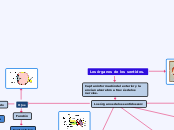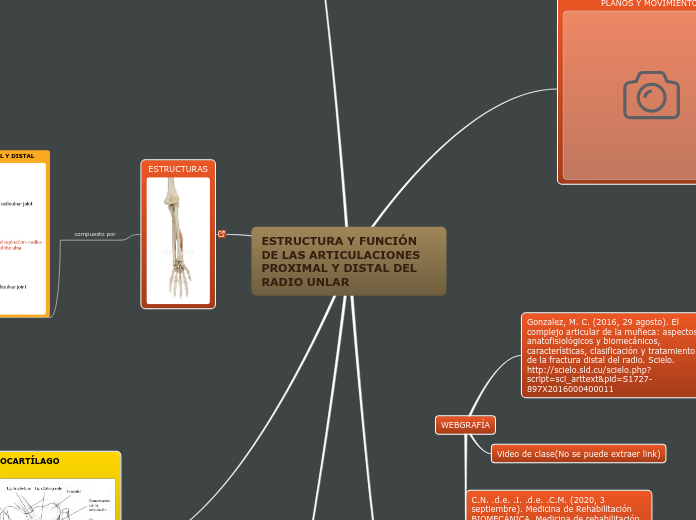NADIA SERVIN MORENO GRUPO 115
Músculos, Nervios e Venas y Arterias de la y cara
In linguistics, syntax is the set of rules, principles, and processes that govern the structure of sentences in a given language, usually including word order.
A compound sentence is a sentence that has at least two independent clauses joined by a comma, semicolon or conjunction. An independent clause is a clause that has a subject and verb and forms a complete thought.
ELEVADOR DEL ALA DE LA NARIZ
Create your own compound sentences, using the coordinators above.
Dilata las aberturas nasales
Apófisis ascendente del maxilar superior, y en el ala de la nariz
En la piel del ala de la nariz y del labio superior
MIRTIFORME DE LA NARIZ
FUNCIÓN
Estrecha las aberturas nasales y hace descender el ala de la nariz
INSERCIÓN
En la fosita mirtiforme y se dirige hacia arriba para terminar en el subtabique del ala de la nariz
INICIO
Pequeño músculo radiado situado por debajo de las aberturas nasales
TRANSVERSO DE LA NARIZ O NASAL
When independent clauses are joined with coordinators (also called coordinating conjunctions), commas and semicolons, they do more than just join the clauses. They add meaning and flow to your writing.
FUNCIÓN:
Abre el ala de la nariz hacia arriba y adelante. Es dilatador de las narinas
INSERCIÓN:
Termina en la piel y en el músculo mirtiforme
INICIO:
Del dorso de la nariz, donde nace, se dirige al músculo abajo hacia el surco del ala de la nariz
A complex sentence is a sentence that contains an independent clause and one or more dependent clauses.
An independent clause can stand alone as a sentence, but a dependent clause even though it has a subject and a verb cannot stand alone.
MASETEROS
Attributive clauses serve as an attribute to a noun (pronoun) in the main clause. This noun or pronoun is called the antecedent of the clause.
ORBICULAR DE LOS LABIOS
BORLA DEL MENTÓN O MENTONIANO
CUADRADO DEL MENTÓN
RISORIO
An adverbial clause is a group of two or more words that function as an adverb in a sentence.
TRIANGULAR DE LOS LABIOS O DEPRESOR DEL ANGULO DE LA BOCA
CIGOMATICO MAYOR
An appositive clause follows another noun or noun phrase in apposition to it; that is, it provides information that further identifies or defines it.
COGOMATICO MENOR
The subject clause is a dependent clause that acts as a subject.
CANINO O ELEVADOR DEL ANGULO DE LA BOCA
ELEVADOR DEL LABIO SUPERIOR
A predicative clause may be introduced by conjunctions - that, whether, whether... or, as, as if, as though, because, lest, the way - or connectives.
The latter may be conjunctive pronouns - who, whoever, what, whatever, which - or conjunctive adverbs - where, wherever, when, whenever, how, why.
ELEVADOR SUPERFICIAL DE ALA DE LA NARIZ Y DEL LABIO SUPERIOR
BUCCINADOR
The object clause is a phrase on which a verb performs an action. It falls at the end of a sentence, and is governed by a verb or a preposition.
CAROTIDA INTERA
OFATALMICA
DORSAL
SUPRATROCLEAR
SUPRAORBITARIA
ARTERIAS CAROTIDA EXTERNA
TEMPORAL SUPERFICIAL
FACIAL TRANSVERSA
MAXILAR
CIGOMATICA
MENTONIANA
INFRAORBITARIA
ANGULAR
NASAL LATERAL
LABIAL SUPERIOR
LABIAL INFERIOR
MÚSCULOS CUTÁNEOS
MÚSCULOS DE LOS LABIOS
See the example below and try to create your own simple sentences.
Tim is driving the red car.
MÚSCULOS DE LA NARIZ
See the example below and try to create your own simple sentences.
Tim is driving the car with his mother.
MÚSCULOS DEL PABELLÓN DE LA OREJA
See the example below and try to create your own simple sentences.
Tim is the driver.
Son dilatadores del conducto auditivo externo y orientadores del pabellón auricular.
ANTERIOR, SUPERIOR Y POSTERIOR
Son músculos auriculares y son tres:
MÚSCULOS DE LOS PARPADOS Y CEJAS
See the example below and try to create your own simple sentences.
Tim drives the car.
MUSCULO OCCIPITO FRONTAL
Estos se originan en la piel de la frente y cejas se insertan en el occipital en la linea nucal superior. El occipito frontal junto al occipito temporal forman el epicraneo
SUPERCILIAR
FUNCIÓN: Atrae hacia dentro y abajo la piel de las cejas
INSERCIÓN: por dentro en la porción interna del arco superciliar; por fuera, en la cara profunda de la piel de las cejas
INICIO: interna del arco superciliar, debajo del orbicular de los párpados.
PIRAMIDAL O PROCER
FUNCIÓN: forma los pliegues transversos en el entrecejo.
INSERCIÓN: en la piel de la región de la glabela
INICIO: dorso oseo de la nariz y aponeurosis del musculo perinasal.
ORBICULAR DE LOS PARPADOS
FUNCIÓN: aproximar los párpados, oclusión el orificio palpebral
INSERCIÓN: Piel alrededor de la órbita. Circunda toda la abertura de los párpados
INICIO: región del borde medial de la órbita, en el proceso frontal del maxilar en el hueso lagrimal
NERVIOS
FACIAL
The predicate of a sentence is the part that modifies the subject in some way. Because the subject is the person, place, or thing that a sentence is about, the predicate must contain a verb explaining what the subject does and can also include a modifier.
5.CERVICAL
4.MANDIBULAL
3. BUCAL
2. ZIGOMATICO
1. TEMPORAL
TRIGEMINO
The subject of a sentence is the person, place, thing, or idea that is doing or being something. You can find the subject of a sentence if you can find the verb.
Ask the question, 'Who or what 'verbs' or 'verbed'?' and the answer to that question is the subject.
3 MANDIBULAR
2 MAXILAR
1 OFATLMICO









